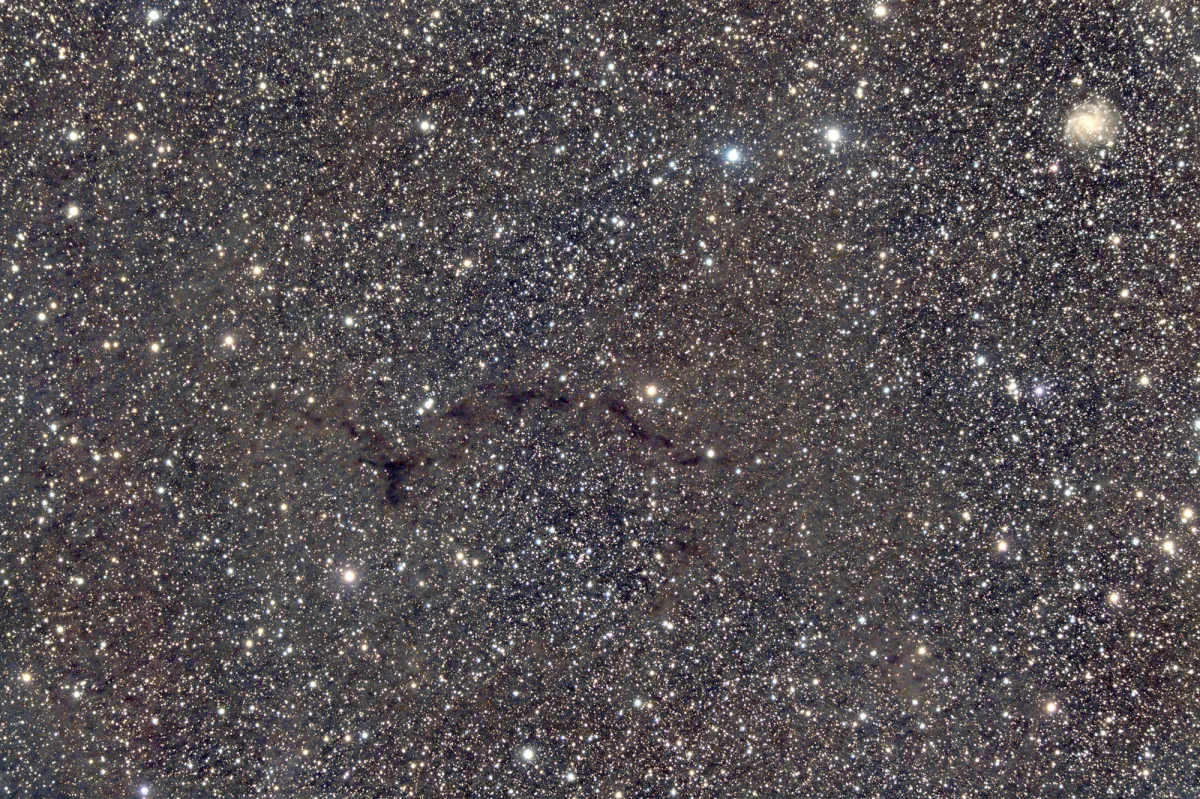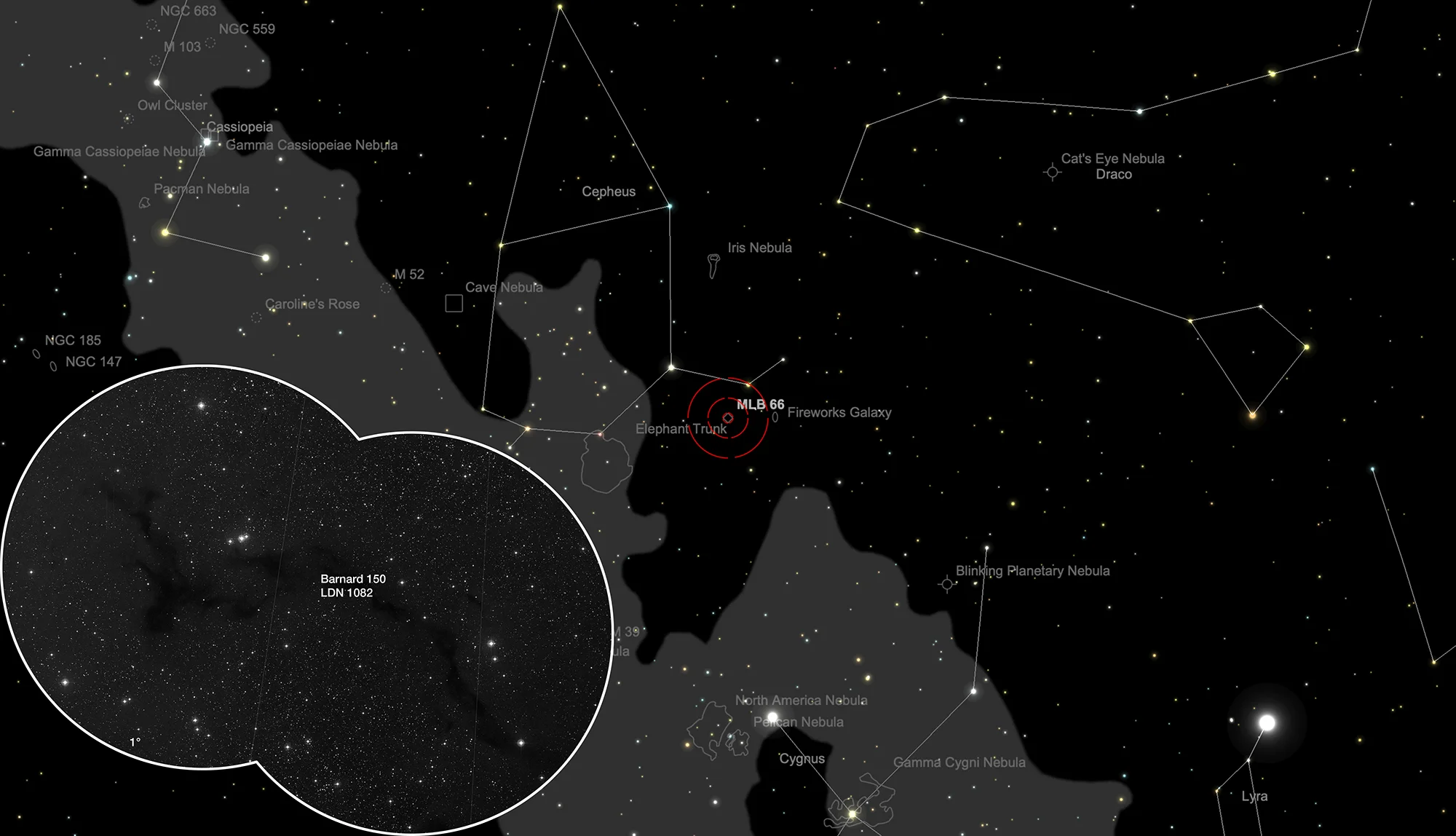Seahorse Nebula (LDN 1082)

History
Edward. E. Barnard found that dark markings in the sky were not always caused by a void of stars but by a dark opaque nebulae. He published his catalogue of 182 such «Dark Markings in the Sky» in 1919 where this nebula is listed as number 150 (Barnard 150, B 150) with the notes «Curved dark marking; 1° long» [239]
In 1962 Beverly T. Lynds published a compilation of 1802 nebula in her «Catalogue of Dark Nebulae» that she found on photo plates of the «National Geographic Palomar Observatory Sky Atlas». This nebula is listed there with the designation LDN 1082. [473]
Physical Properties
LDN 1082 is a dark filamentary molecular cloud. In its dense core it contains low-mass, low-luminosity Class 0 young stellar objects. The distance to the cloud core was calculated to be 270 ± 10 pc. [592]
| Name | Barnard 150 |
| Object Type | Dark Cloud (nebula) |
| Right Ascension (J2000.0) | 20h 51m 06s |
| Declination (J2000.0) | +60° 11' 00" |
| Angular size | 20' × 20' |
| Identifiers | Barnard 150; GF 9; LDN 1082; [DB2002b] G96.98+10.07 |
Finder Chart
The dark nebula Barnard 150 (LDN 1082) is located in constellation Cepheus, almost exaxtly in the middle between Flying Bat Nebula (Sh 2-129) and the Fireworks Galaxy (NGC 6946). To find just drift 2.5° to the east from NGC 6946. The constellation Cepheus is circumpolar, but it is highest in the sky in the months of April to January and the nebula can therefore be observed best then.
